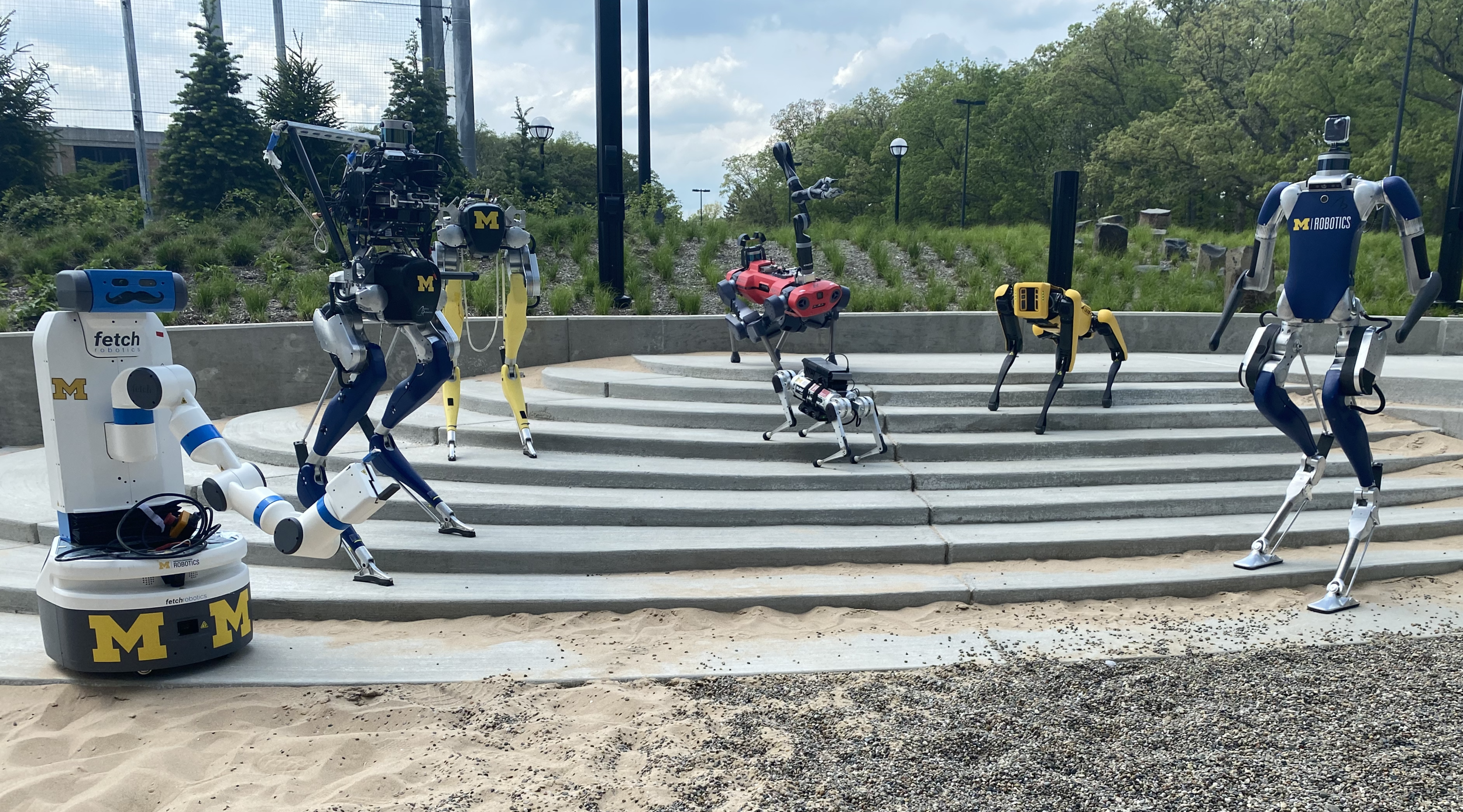
The ROAHM (Robotics and Optimization for the Analysis of Human Motion) Lab seeks to understand and improve human and robot interaction with one another and with the environment. We devise techniques to diagnose unsafe behavior and construct controllers that can then safely intervene or aid in retraining. Our work seeks to develop practical solutions to these problems while providing mathematical guarantees regarding performance. We illustrate the utility of our work on a variety of robotic systems (some of which are depicted in the image above). You can learn more about previous research projects on our media page and ongoing research projects on our research page.